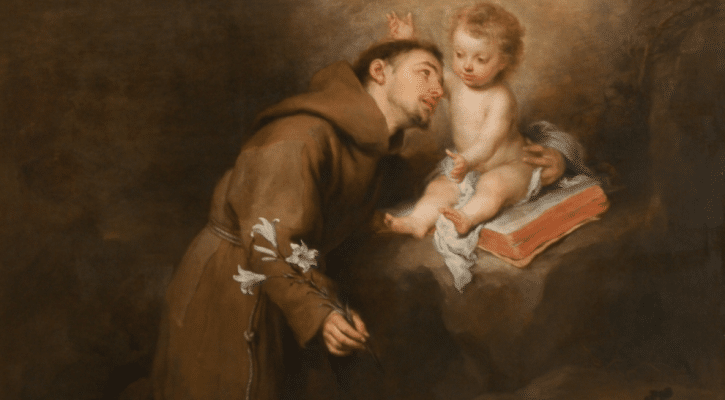A favorite in much of the Catholic world, St. Anthony of Padua has more cities and places named after him than any other saint—68.
This includes forty-four in Latin America, fifteen in the United States, four in Canada, four in the Philippines, and one in Spain. Four capes, three bays, two reefs, and two peaks also take his name. Even more numerous have been, until recently, the statues of St. Anthony in churches, where he is depicted holding the Christ child, the book of Scriptures, and a lily or a flaming torch.
A Saint with a Worldwide Appeal
Obviously Anthony must have been a favorite of missionaries who took this likeable saint to the Western Hemisphere and to many other lands around the world. But over the years it seems to have been laypeople who have adopted St. Anthony of Padua as a kind of all-purpose saint—finder of lost articles, helper in troubles, healer of bodies and spirits. Hundreds of thousands have prayed the quaint old responsory: “If miracles thou fain would see, Lo, error, death, calamity…”
We might be tempted to ask, as a friar once asked St. Francis of Assisi, “Why after you? Why after you?” The answer seems to be both the immense popularity of St. Anthony in his lifetime and the flood of wonders that followed his death. In St. Anthony: Doctor of the Church, Franciscan scholar Sophronius Clasen, OFM, wrote:
Immediately after his death, Anthony became the object of an extraordinary devotion; and miracle followed miracle, as the prayers of the sick and afflicted were answered by sudden cures and other wonders. This set on foot a great wave of enthusiasm, and drew large crowds to his tomb, who began to honor him as a St. even before the pope had canonized him. Often orderly processions were formed; and these were led sometimes by the bishop of Padua and his clergy. The leading knights of the city and the students of the university all took part; and all carried candles of great size.

Finding the Real St. Anthony
Older, unremodeled churches almost always count St. Anthony among their collection of statues. The saint of Padua is usually sculpted or portrayed holding in his arms the child Jesus, a lily, a book, or all three. A bank of vigil lights will burn in front of the statue.
Tuesday evening is the traditional time of St. Anthony novena devotions, with prayers to St. Anthony, benediction, and the reading of petitions written on little scraps of paper: “for a safe delivery,” “to obtain a job,” “for reconciliation with my daughter,” and, invariably, “to find my lost _____.” On the saint’s feast day, June 13, St. Anthony bread is blessed. And since the saint is the special patron of Italy, an honor he shares with St. Francis, many Italian families have a son named Anthony.
The list of human concerns for which Anthony is the patron is amazingly varied. Fr. Lothar Hardick, OFM, who wrote a book on the saint, tells us that St. Anthony has been known as the patron of lovers and of marriage, as a helper in time of birth or as a help against infertility. He was called upon against fevers, against diabolic powers, and against plagues among cattle. He was honored as the patron of mariners as well as of those who live in mountainous areas.
The array of wonders attributed to Anthony in story and legend is equally astounding in its variety. He was in two places at the same time; after a dare by an unbeliever and at Anthony’s prayer, a donkey knelt before the Blessed Sacrament; fishes lifted their heads above the water to listen as he preached to them, after bored believers turned away; a foot severed by an ax was rejoined to its leg.

